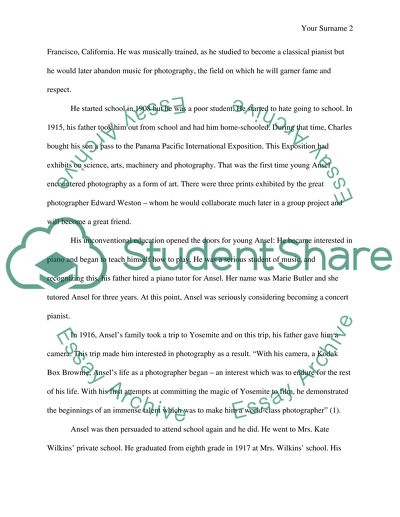Cite this document
(“Research paper about famous photographer Ansel Adams”, n.d.)
Retrieved from https://studentshare.org/visual-arts-film-studies/1489779-research-paper-about-famous-photographer-ansel
Retrieved from https://studentshare.org/visual-arts-film-studies/1489779-research-paper-about-famous-photographer-ansel
(Research Paper about Famous Photographer Ansel Adams)
https://studentshare.org/visual-arts-film-studies/1489779-research-paper-about-famous-photographer-ansel.
https://studentshare.org/visual-arts-film-studies/1489779-research-paper-about-famous-photographer-ansel.
“Research Paper about Famous Photographer Ansel Adams”, n.d. https://studentshare.org/visual-arts-film-studies/1489779-research-paper-about-famous-photographer-ansel.


